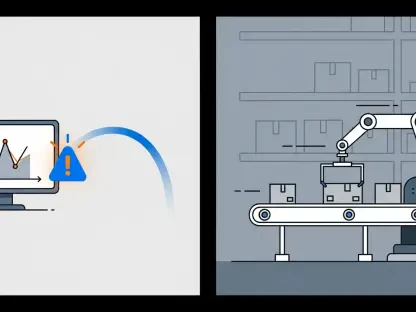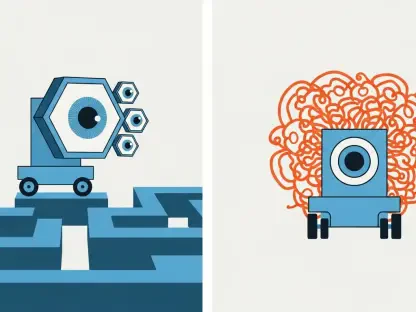The realm of artificial intelligence has significantly impacted numerous fields, standing on the verge of revolutionizing many traditional practices. In medical imaging, explainable AI models and traditional AI methods are central to transforming breast cancer detection in MRI scans. With advanced AI models proving capable of outperforming existing benchmarks, the emphasis on understanding and interpreting these models’ decisions has become increasingly critical. This analysis seeks to unravel how explainable AI models compare to traditional AI techniques, particularly in breast cancer detection contexts.
Background and Application
Explainable AI Models
Explainable AI models are designed with the primary goal of being transparent and interpretable, providing insights into how decision-making processes occur within an AI system. These models are particularly applied in domains like healthcare, where understanding AI decisions is crucial. Explainable AI aims to bridge the gap between model predictions and human understanding by providing clear and interpretable reasoning for its outcomes.
In practice, the applications of explainable AI models are vast, ranging from enhancing diagnostic procedures in medical imaging to improving transparency in financial services. In the context of breast cancer detection, explainable AI models reveal areas of interest on MRI scans, aiding radiologists by providing visual cues and insights that may not be readily apparent with traditional AI methods alone.
Traditional AI Methods
Traditional AI methods, often characterized by black-box models, prioritize performance over interpretability. These models are trained to achieve high accuracy, but their decision-making processes remain opaque to users. The primary goal is to deliver precise predictions, even when it’s challenging to explain how those predictions are derived.
Despite their opaque nature, traditional AI methods hold their ground in various applications due to their proven performance. In fields like finance, manufacturing, and more recently, healthcare, these AI systems drive efficiency with high predictive accuracy. However, the challenge remains to interpret their decisions, especially in critical areas such as breast cancer detection, where understanding the rationale behind a diagnosis could be equally important as the diagnosis itself.
Comparative Features
Interpretability
In terms of interpretability, explainable AI models offer a significant advantage due to their transparent nature, allowing users to understand and trust AI-driven decisions. By using techniques such as generating heat maps, these models assist professionals in visualizing and comprehending the underlying processes in cancer detection.
Conversely, traditional AI methods are often viewed as black-box systems, where interpretability is limited. While these systems excel in prediction accuracy, they typically do not provide explanations for their outputs, which can be a major limitation in medical fields. As a result, healthcare practitioners may hesitate to fully rely on these systems when critical decisions are involved, highlighting the importance of interpretability that explainable models offer.
Performance and Accuracy
Explainable AI models, as demonstrated in case studies, show promising results in both performance and accuracy, particularly in medical imaging. These models have been designed to tackle imbalanced datasets found in breast cancer detection, proving highly effective in real-world scenarios.
Traditional AI methods emphasize performance, with historical data showing consistent benchmarks across various applications. In breast cancer detection, these methods have been thoroughly evaluated, achieving commendable accuracy levels. However, recent comparisons with explainable AI models have shown that although traditional methods are effective, the newer explainable models often surpass them in complex and nuanced detection tasks.
Adaptability and Flexibility
Explainable AI models are known for their adaptability, offering seamless integration into existing workflows. These models can be modified to address different challenges, demonstrating flexibility and accommodating rapid technological changes and new requirements.
Traditional AI methods provide stability and consistency, which are valuable in maintaining robust performance across diverse applications. Nevertheless, their adaptability may be limited compared to explainable AI models, as changes or modifications can require intricate adjustments, making them less flexible in dynamic environments.
Challenges and Limitations
Explainable AI Models
Although explainable AI models present innovative solutions, they still encounter technical challenges, particularly in ensuring that their explanations are both intuitive and useful. Additionally, ethical considerations arise when deciding what information should be shared with users and ensuring that user privacy is not compromised in striving for transparency.
Traditional AI Methods
Traditional AI models face challenges, especially concerning interpretability. The inability to fully explain decision-making processes poses risks, particularly in sensitive areas like healthcare. Scalability and ethical concerns further limit these models, as adapting to larger datasets or changing environments might lead to issues without adequate explainability.
Conclusion and Recommendations
The comparative analysis highlights distinct strengths and weaknesses of both explainable AI models and traditional AI methods within breast cancer detection contexts. While explainable AI models excel in interpretability and adaptability, traditional AI methods are lauded for their performance and established benchmarks. Future developments might benefit from integrating both approaches, leveraging the strengths of each to innovate within medical imaging and other fields. Fostering trust and collaboration between AI models and users is crucial for future innovation and success in AI-driven applications.









